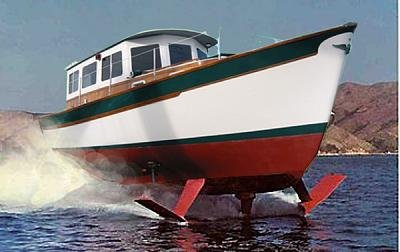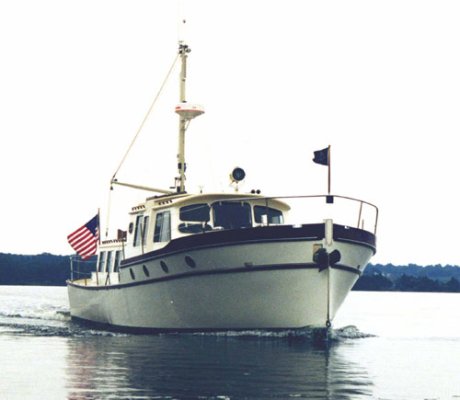It is more than just looking at hull shape and saying...hmm..flat bottom, with a Vee, must be a planning boat...or wow, boat is fast so why is it not called a planning boat.
Any "body" moving through the water, ie at the air-sea interface, will create pressure variations around the 'body'...these pressures variations manifest themselves as waves. These waves are a measure of energy and hence drag.
The shape of a hull can affect this pressure distribution considerably. In a nut shell to cut a long story short, the stern experiences suction pressure fields. Speed then also begins to play a part....ie trim/squat, the faster one goes.
For a "normal" boat, the faster one tries to go, the more trim and the greater the power required for little gain. The back is sucked down and dragging creating a lot of wash/waves. Too much energy is being used in making waves. The reason is the hull shape and its length displacement ratio. This is seen in the resistance curve by humps, and the main prismatic hump. A hull must over come this main hump to go faster, ie make "lesser waves" or better still no waves. Long thin hulls, hydrodynamically, behave differently to short fatter ones.
However, just making the aft section flat with/out a vee, doesn't mean that is all that is required just to go fast, or get over the "hump" in the resistance curve. That is just hull shape.
Making the hull longer and thinner, reduces the 'near vertical' curve in resistance of a 'normal' hull form...ie its length displacement ratio. Not only does the resistance curve become less step, but also the main hump is much less pronounced. The longer and thinner one makes it (that is light for its total length), the curve slowly approaches a smooth curve and almost no discernible prismatic 'hump'. This is why fast ferries, for example, go fast, have a high froude number, but are not planning. They are long and thin.
The length displacement ratio (ie long and thin) allows the hull to be driven faster than would normally be the situation. The wave making résistance gets less and less, the longer and thinner the hull becomes.
The down side is, one of these long thin hulls is generally far too unstable to be used effectively. Solution, put two side by side, ...a catamaran. Utilizing the benefits of the long thin hydrodynamic effects, but providing a stable platform for use in almost any application safely.

 but we have no wind indicator and this day we could just "feeling" and we 'feel' less than 25 kts.(and my stomac also and it is a very good specialist for "appreciate" the real weather
but we have no wind indicator and this day we could just "feeling" and we 'feel' less than 25 kts.(and my stomac also and it is a very good specialist for "appreciate" the real weather










